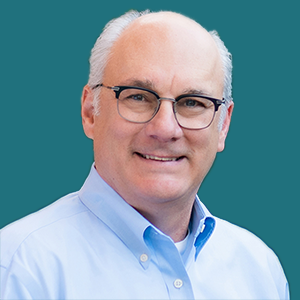The Future of Sickle Cell Disease’s Landscape of Care
Mark Walters, MD, a professor in residence for pediatrics at the Sickle Cell Center of Excellence at the University of California discussed gene therapy’s ongoing transformation of the treatment landscape.
Mark Walters, MD

The recent emergence of new treatment options has begun to impact the landscape of care for sickle cell disease (SCD). Most notably, the FDA's December 2023 approval of Vertex Pharmaceuticals' and CRISPR Therapeutics’ gene editing therapy exagamglogene autotemcel (exa-cel; marketed as Casgevy) and bluebird bio’s gene addition therapy lovotibeglogene autotemcel (lovo-cel; marketed as Lyfgenia), has opened the door to curative potential for many more patients with the disease.
In June 2024, CGTLive® reached out to Mark Walters, MD, a professor in residence for pediatrics at the Sickle Cell Center of Excellence at the University of California, San Francisco, to get his insight on the future treatment landscape for SCD. Walters discussed the impact of the new therapies, as well as several still-investigational treatments that may be approved for SCD in the future.
CGTLive: Can you give some background information about the current landscape of care for Sickle Cell Disease (SCD)?
Mark Walters, MD: The current landscape of care for SCD is still centered on a foundation of supportive and preventive care. This begins with newborn screening to establish a diagnosis and then follow shortly thereafter by institution of supportive care. The one important change is that doctors and care providers are instituting disease-modifying therapies earlier and earlier in a child's life and this is predicted to have significant impact on protection from organ injury related to the disease. More recently, there are now FDA-approved treatments that involve gene therapy of autologous cells that should make a therapy with curative intent available to many more persons who previously lacked a donor for an allogeneic hematopoietic cell transplantation. So the future of SCD care is improving, and I would say even on the edge of exciting, in that if these therapies can be brought out and made available to most individuals who might benefit from them, it could transform the trajectory of this disease in the future.
How has the FDA’s approval of the gene therapy products lovo-cel and exa-cel changed this treatment landscape?
The new gene therapy treatments were approved in December 2023 by the FDA and they're both autologous, cell gene modification treatments. Because each person acts as their own donor, this should greatly lower the barrier to the option of a curative therapy. The other thing that's important about these autologous cell therapies is that there's no risk of graft versus host disease, nor of graft rejection, which immediately makes them safer than the conventional allogeneic transplant, particularly for older patients. So I would say that for adults in particular, this is likely to be an option pursued by those who are in reasonably good health and can go through this intensive treatment. I predict it will be used increasingly for children, too, when they begin to show signs of disease severity. The last question, and I think we'll go into this more in a minute, has to do with: Will this be accessible? Will this be affordable? Can patients get the treatment where they live? That's a question that's very much still up in the air.
Taking into consideration these new options, how should doctors help patients choose the right treatment option for SCD?
Doctors and comprehensive healthcare teams will play a principal role in the decision-making process for patients considering the autologous gene therapies that are now approved and available. This involves carefully balancing the risks and benefits of the treatment, both in the short-term and the long-term, and understanding there's a potential for long-term side effects that aren't very well or are not understood at all right now that will have to be considered when making a decision about whether to pursue them. I think too, because many patients have common mental health issues, mental health professionals will also play an important role in assisting in decision-making; and if the decision is made to move forward, supporting individuals through the treatment, which can be quite grueling, so that they can successfully make use of the treatment.
Are there any noteworthy therapeutic candidates for SCD still in development now that you find promising for the future?
I'm happy to say and observe that there are ongoing efforts to develop both disease-modifying therapies and curative therapies. In the realm of gene editing and gene therapy, the goal is to one day have what we call an in vivo treatment, where one would inject the gene editing tools directly in the bloodstream. They would migrate and home to the blood stem cells, where they reside in the bone marrow, and make the edits in vivo. This would make the treatment immediately more accessible, potentially less expensive, and possibly eliminate the use of high dose chemotherapy. Those sort of advances are really needed before gene editing will have its full impact on this disease.
In disease modifying therapies, there's very exciting work being done on a class of drugs called pyruvate kinase agonists that both raise the hemoglobin and have the potential to lessen pain. In persons with SCD, these are in clinical trials and probably will be approved in the near future. Then there's still very exciting ongoing work looking at newer drugs to induce fetal hemoglobin—which is what the gene editing treatment does. It modifies a repressor of fetal hemoglobin and reawakens the fetal hemoglobin to the point where it has both antisickling effects and raises the hemoglobin in persons who successfully receive the gene therapy treatment called exa-cel. So lots of interesting work and exciting work is going on that I think will continue this trajectory of having better and more accessible, affordable treatments for this disorder.
Transcript edited for clarity.